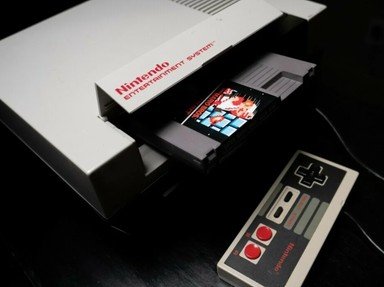Quiz Answer Key and Fun Facts
1. Game 10: I am deep in the heart of Transylvania. I am searching for an evil count. This is the second time I have been in this part of Transylvania, although strangely enough the halls that once held enemies is eerily silent. I make it at long last to the boss's chamber. The evil count casts bats at me while materializing in different parts of the room. I jump off the bats to melee him with my staff. What game am I playing?
2. Game 9: What game famously features an ending sequence involving Adolf Hitler's face exploding in gruesome detail?
3. Game 8: What game featured a "Nintendo Power" promotion where they literally gave the game away for renewing a subscription to the magazine?
4. Game 7: "Mike Tyson's Punch-Out!" is well revered as one of the best NES sports title out there. The game's sequel was to feature Mike Tyson fighting what type of villains?
5. Game 6: Ah, "Metroid"- one of my all time favorite NES titles. How quickly must you beat the game to see Samus raise her hand in victory?
6. Game 5: Armed with a whip and a throwing star, you are close to the end of your quest. The Grim Reaper gives you battle. He throws several sickles at you and floats around the room, making him very, very difficult to dodge. There are six blocks, three on either side of the screen on which you can jump. Though the fight is difficult, you have no fear. You see, this is not your first encounter with the Grim Reaper. What's the game?
7. Game 4: "Mega Man 2" is the most highly acclaimed NES title in the "Mega Man" series, and also the entire "Mega Man" franchise. "Mega Man II" is probably the most flexible of the original six titles concerning the order in which you can fight the eight Robot Masters. However, the July-August 1989 issue of Nintendo Power recommends a specific order. According to "Nintendo Power", what is fifth Robot Master you should attack?
8. Game 3: "Super Mario Bros." is probably the most famous video game out there. How many unique levels are there in "Super Mario Bros."?
9. Game 2: The map of "The Legend of Zelda" appears in what subsequent "Zelda" game?
10. Game 1: How many games previously starred Mario in the "Super Mario" series before Nintendo published "Super Mario Bros. 3"?
Source: Author
berenlazarus
This quiz was reviewed by FunTrivia editor
kyleisalive before going online.
Any errors found in FunTrivia content are routinely corrected through our feedback system.
